Atomic Heart and an RTX 4090 prove it's 8K TVs that now need to catch up
You know what? 8K gaming may be here...
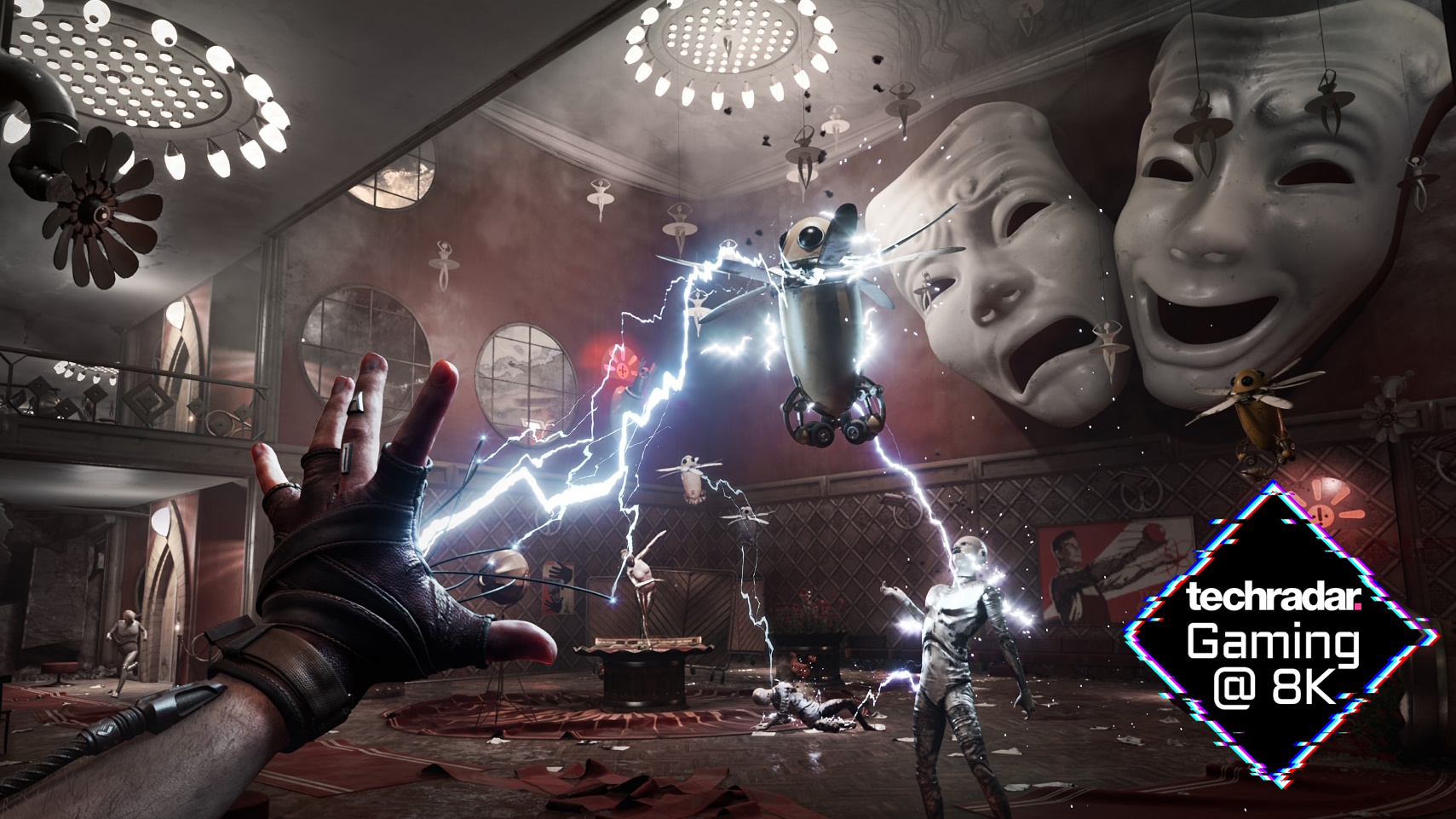
PC built by Stormforce Gaming
Motherboard: Asus PRIME Z-790P LGA 1700
Processor: Intel Core i9-13900K, 24 Cores / 32 Threads
CPU Cooler: Corsair iCUE H100i 240mm ELITE CAPELLIX Liquid CPU Cooler
GPU: Nvidia GeForce RTX 4090
Storage: 1.0TB Seagate FireCuda 530 M.2 NVMe SSD
Case: Corsair iCue 5000X RGB
RAM: Corsair Vengence 32GB DDR5 4800MHz
Screen: LG 55NANO966PA
Whilst playing Atomic Heart – a new first-person shooter that's heavily inspired by the Bioshock franchise – at 8K, I realized that when it comes to PC gaming, playing at 7680 x 4320 resolution is now achievable as long as you have the hardware that can handle it.
Nvidia's latest flagship GPU, the GeForce RTX 4090, is an absolute beast, and when combined with the company's DLSS 3 upscaling tech, playing games at 8K and 60 frames per second, which a few years ago seemed like an impossibility, is now within reach. There are, however, some pretty major caveats that mean 8K gaming will be out of the reach of many people for a long time to come.
The biggest issue is that one of the key factors in 8K gaming success is the formidable 4090, easily the most powerful consumer graphics card Nvidia has ever made. Having used flagship GPUs such as the Nvidia GeForce RTX 3090 and RTX 3090 Ti during my mission to game in 8K, Nvidia's latest card offers a drastic increase in performance – but at a price. The RTX 4090 is an extremely expensive GPU, and because its 24GB of GDDR6X is essential for playing games at 8K resolution, it's your only choice from Nvidia's current Ada Lovelace lineup of cards.
DLSS 3 is also exclusive to the Ada Lovelace generation, and while previous versions of DLSS have made a huge difference when it comes to playing games at 8K and at decent framerates, DLSS 3 is the current pinnacle of that technology, leading to even better performance and image quality.
Equipped with TechRadar's super-powerful 8K gaming PC, built by Stormforce Gaming, it's clear that 8K gaming is here... for some of us.
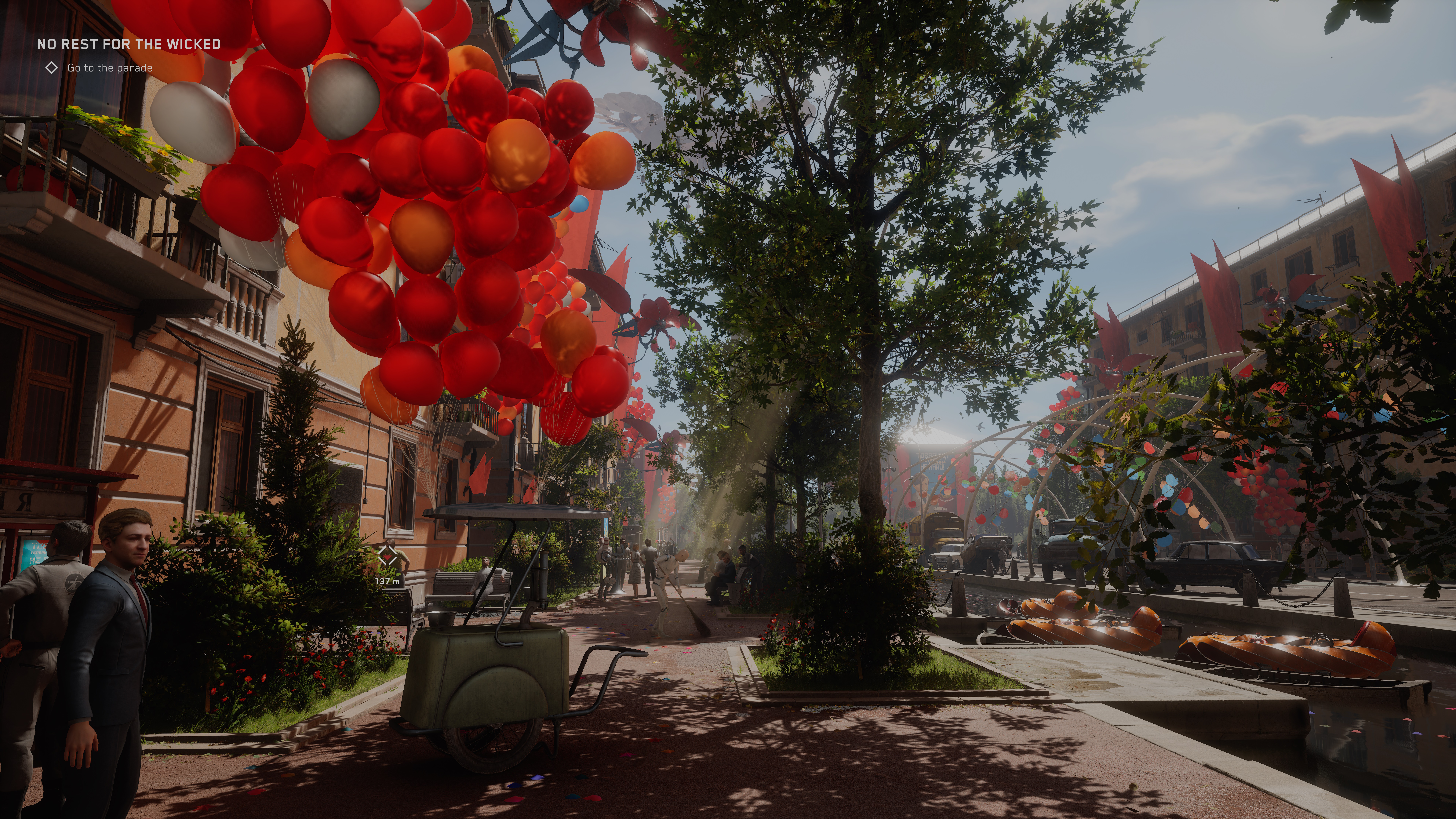
A soviet Bioshock
Atomic Heart is a game that's been on my radar for a while, so as soon as it released, I was keen to see how it'd play at 8K.
The graphics looked incredible, and it was clear that was a strong Bioshock influence to the game; a first-person shooter with an increasingly elaborate range of weapons and powers and a storyline that explores an alternate timeline where the Soviet Union doesn't just still exist, but is an incredibly technologically-advanced society.
Get daily insight, inspiration and deals in your inbox
Sign up for breaking news, reviews, opinion, top tech deals, and more.
With Russia's invasion of Ukraine, many of these pro-soviet themes became quite uncomfortable, especially as there are questions around the Russian developer, Mundfish Games, and its connections to the Russian government. The Ukrainian government has called for a boycott of the game.
Things are never clear cut, especially when it comes to war, and the influence of the Russian Government on the game and the developers (if any) remains in question, while Mick Gordon, who composed the music for Atomic Heart, donated his fee to a Ukrainian charity.
Still, there's no escaping the geopolitical environment launched in, and with the invasion of Ukraine in my thoughts, especially with the one-year anniversary of the start of the conflict, I can't deny that it impacted my enjoyment of the game.
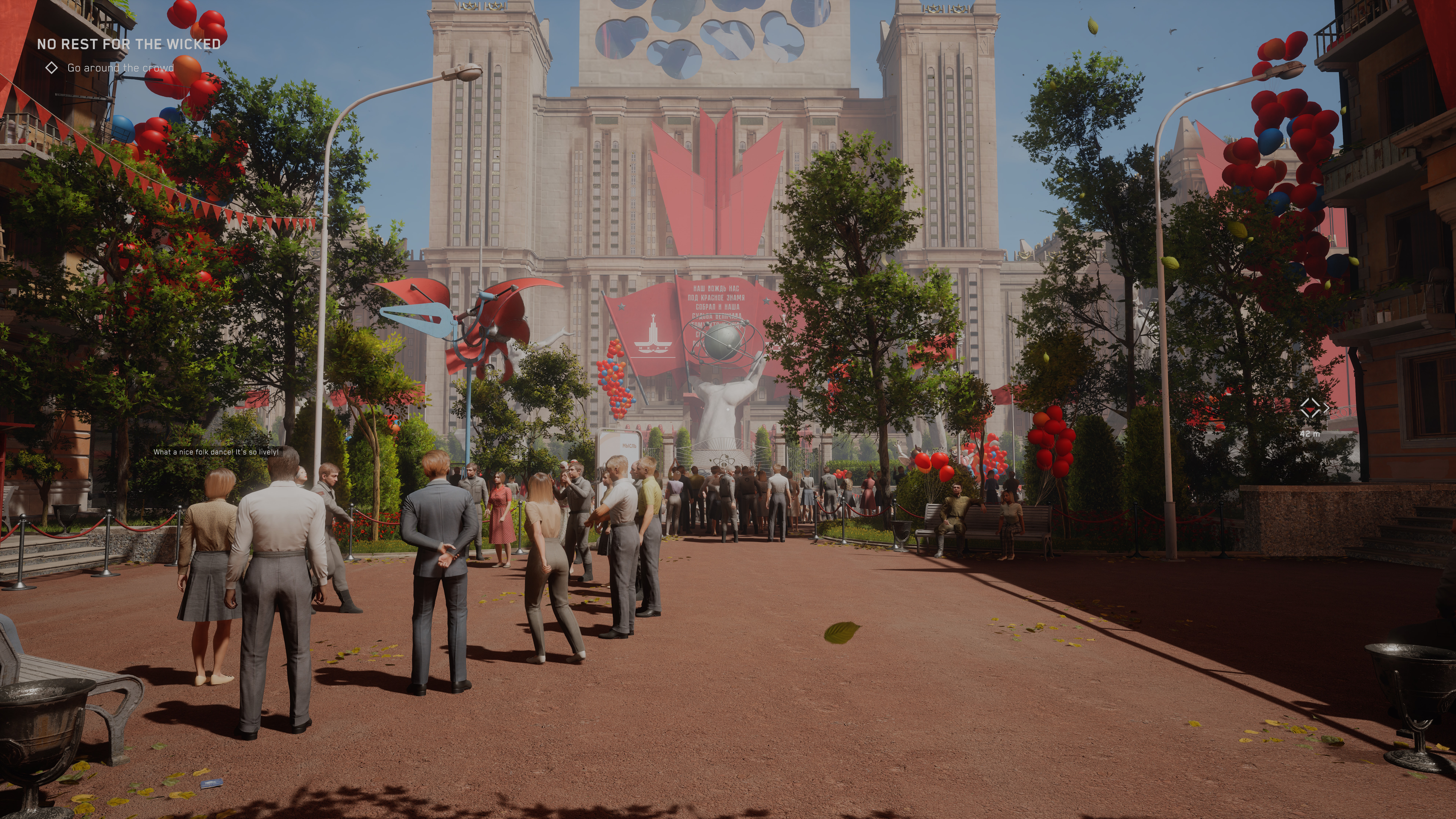
Putting aside my reservations about the theme and setting of the game, the graphics of Atomic Heart absolutely live up to their hype (though the voice acting and dialogue is less impressive), and the world, especially at the start of the game, is bright, vibrant and immersive.
With the game's graphics set to its highest level (Atomic), and the resolution at 7680 x 4320 (8K, in other words), I got an average of 31fps (frames per second). Considering the graphical quality on offer, the fact that Atomic Heart was playable at 8K with no upscaling tricks applied was incredibly impressive.
Turning DLSS on, and putting it at its 'Performance' level (which prioritizes performance over graphical quality by upscaling from a lower resolution) I hit 59.3fps on average. Essentially, I hit that golden 8K at 60fps milestone instantly thanks to DLSS 3, and the image quality didn't drop drastically, except for some slight fuzziness around moving objects.
Switching to the 'Balanced' DLSS setting, which ups the base resolution that it upscales from, gave me pretty much the same result – 59.8fps. The fact that the number is actually slightly higher is likely due to the fact that Atomic Heart has no built-in benchmark, so I was using MSI Afterburner and playing a section of the game, so some runs were slightly different.
It was only when I set DLSS to 'Quality', which ups the base resolution further, did I see a slight drop in frame rates, but on average I was getting 58.9fps, which is still extremely close to 60fps. The lowest framerate at this setting, however, was 50fps, and when a game drops almost 10fps, you can notice it.
I did have one final trick up my sleeve. Still keeping graphical settings at 'Atomic' and DLSS on 'Quality', I turned on frame generation. This is a new feature that's exclusive to DLSS 3, and it uses the AI capabilities of the GPU to create additional frames that are inserted between the real frames.
Turning this on saw my framerates go back up to 59.5fps on average, only dipping slightly to 55fps.
Image quality remained excellent and at 60fps, the game felt wonderful to play.
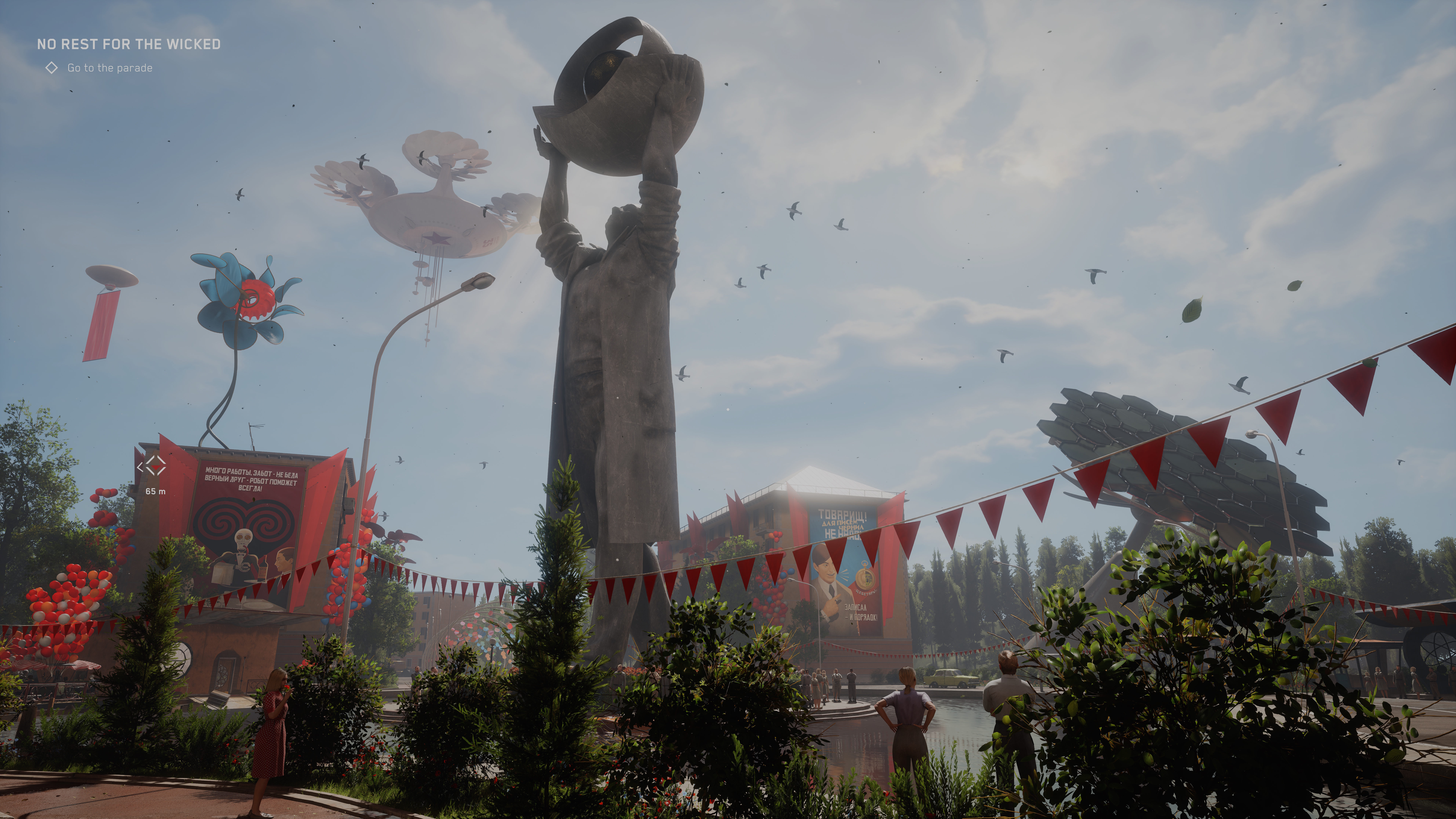
60fps is the limit
One thing you may notice about my results is that with DLSS 3 enabled, it pretty much ran at 60fps at 8K, no matter the graphics level. Even with frame generation, Atomic Heart didn't break the 60fps barrier.
The reason for this is that the 8K TV I am using (the LG 55NANO966PA), like all other 8K TVs, can only display 8K at 60Hz, essentially capping content at 60fps.
Now, when I started trying out 8K gaming a few years ago (armed with the once-high-end RTX Titan), 8K at 60fps felt like a distant goal, but here we are in 2023, and as long as you have an RTX 4090-powered rig, you'll now find yourself butting up against the 60fps wall when playing one of the most graphically-impressive titles of the year at 8K.
That's pretty cool, but what if you want to play at 8K above 60fps? You're out of luck, as the current crop of 8K TVs, which use HDMI 2.1, can only do 8K at 60Hz. It looks like PC gaming hardware has finally overtaken TV tech, so we now need TVs to catch up if we want to play 8K at higher frame rates.
Do we need 8K above 60fps? Well, as any true PC gamer can tell you, higher frame rates are always welcome. And, while playing at 8K at 60fps is certainly impressive, HDMI 2.1 can handle 4K at 120Hz - and playing games at 4K at 120fps is even more impressive, as you're getting fantastic visuals and even smoother gameplay.
With the vast majority of PC gamers playing at 1080p, game developers are understandably not bothering to create art assets that take full advantage of 8K resolutions, so 4K at 120fps remains the best way to play for now. This is also why we're unlike to see 8K at 120hz any time soon as there's just not a market for it.
But, once we see more games aimed at 8K that take full advantage of the resolution and detail, our gaming will be taken to a whole other level, I am sure.
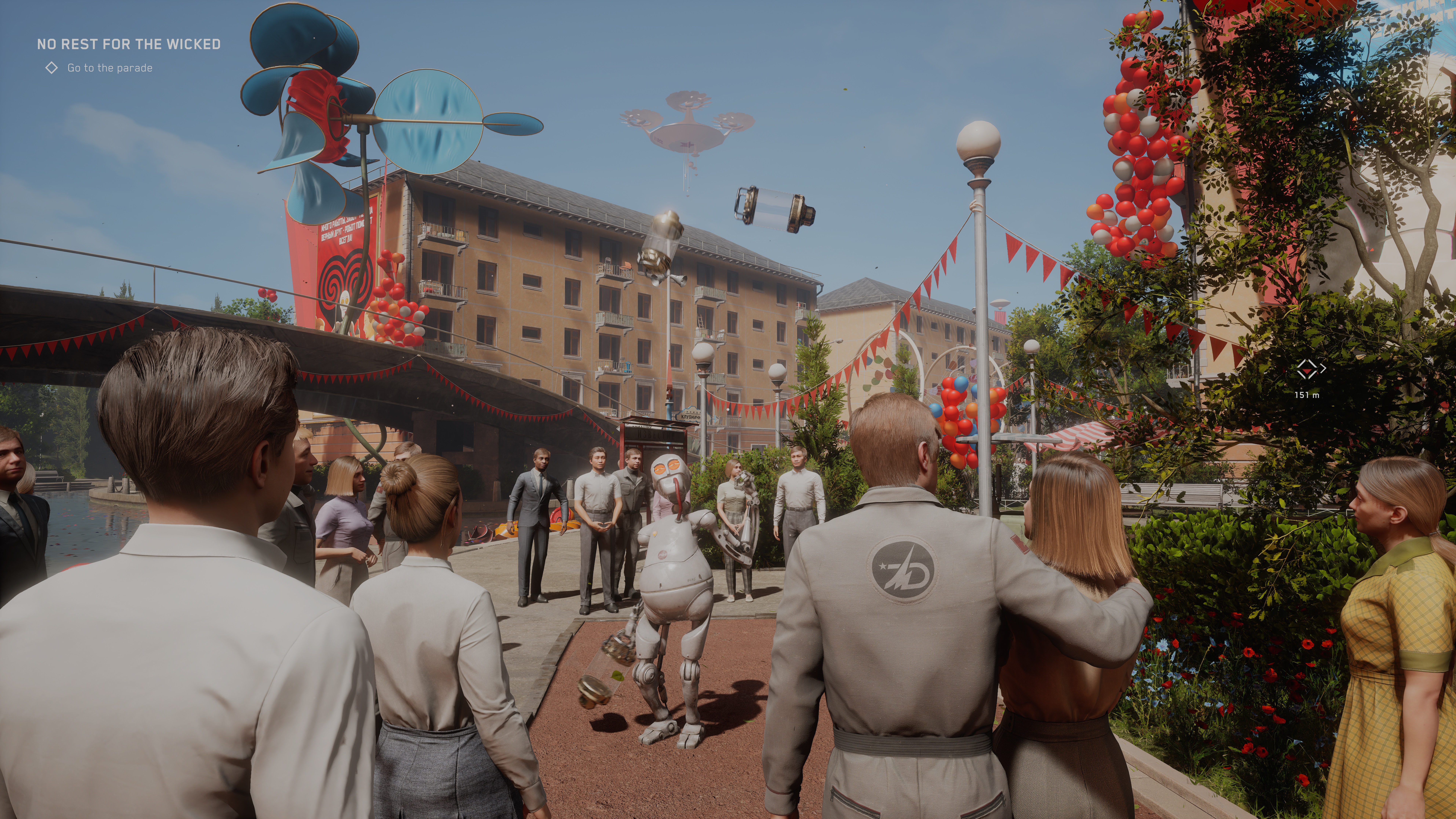
Oh ray tracing, where art thou?
Eagle-eyed readers may notice one big absence from the graphics options with Atomic Heart. Although the game was launched with promises of being a showcase for ray tracing, advanced lighting and reflections tech, the game has launched without support.
This is disappointing, as while Atomic Heart looks fantastic, and there are some nice lighting effects (moving under leaves and even balloons and looking at the sun offers some stunning effects where the materials glow slightly, as in real life), the lack of ray tracing does mean the game misses out on some atmospheric flourishes.
As well as looking great, ray tracing is also incredibly demanding on graphics cards. Hopefully, ray tracing will be included in a future update, and when it does, I'll be sure to try out this game again at 8K, as I bet the RTX 4090 will have more of a struggle to hit 60fps with ray tracing turned on.
If you're getting as excited about 8K gaming as I am, you can order the same high-end setup I used here from Stormforce Gaming in the UK.
- These are the best GPUs of 2022

Matt is TechRadar's Managing Editor for Core Tech, looking after computing and mobile technology. Having written for a number of publications such as PC Plus, PC Format, T3 and Linux Format, there's no aspect of technology that Matt isn't passionate about, especially computing and PC gaming. He’s personally reviewed and used most of the laptops in our best laptops guide - and since joining TechRadar in 2014, he's reviewed over 250 laptops and computing accessories personally.